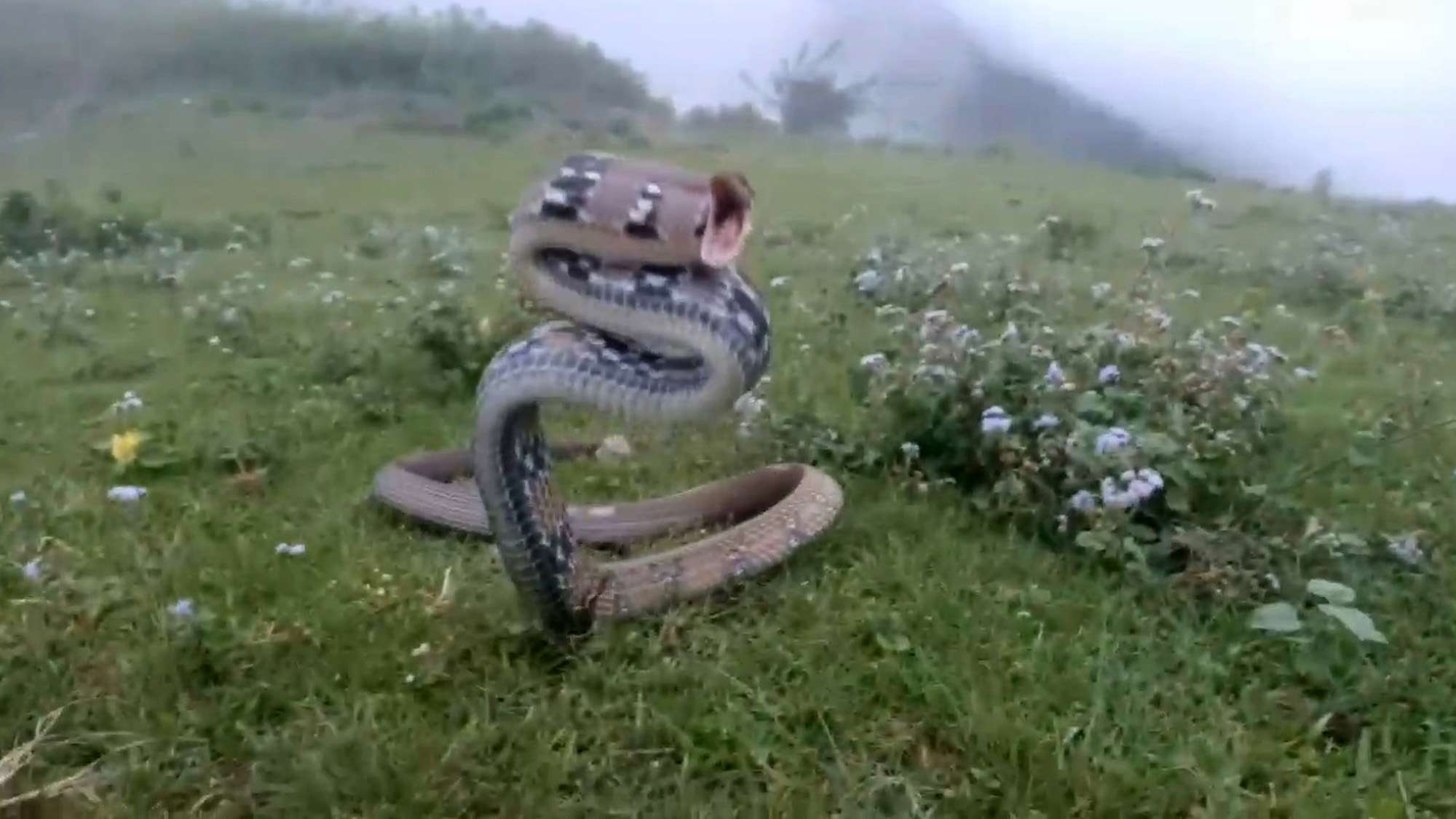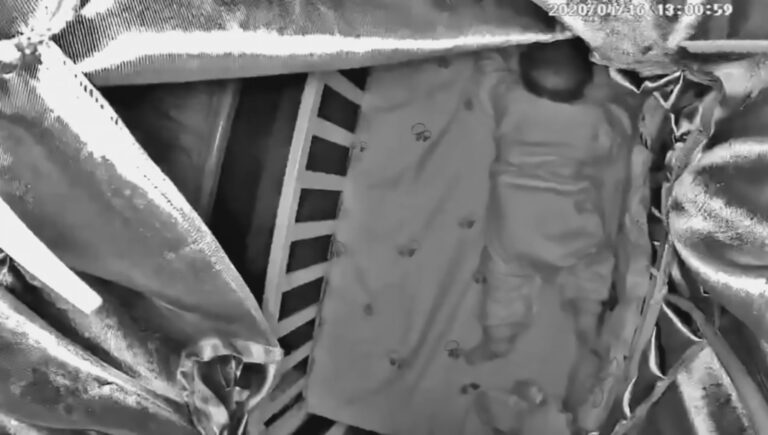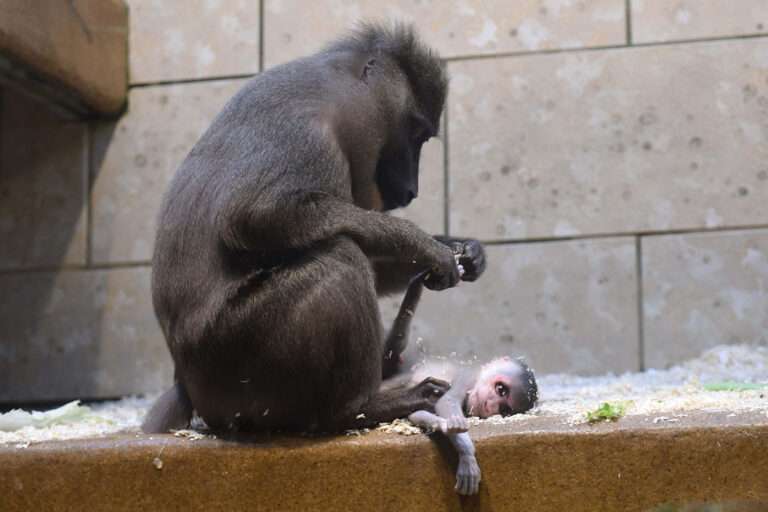This video released by a forestry worker shows the release of a nonvenomous snake that is nevertheless so terrifying that it’s not uncommon for people to die of a heart attack when bitten.
The footage was obtained from forestry worker Arshad Alam, 29, who works for the Uttarakhand forest department, in the Indian state of Uttarakhand.
He said that the snake had been captured in the city of Dehradun, which is the capital of Uttarakhand, and that he had been tasked with taking it back into the wild to release it safely.
He said: “I wanted to show the process of releasing it back into the wild after it was caught in a domestic property.
“The snake is nonvenomous and if it bites it’s just a scratch which you can easily put disinfectant on and that’s it.”
But he said that there were so many wild stories about snakes, and that this particular specimen, which was seven feet long, can be so terrifying, that when people are bitten, they can die from fear.
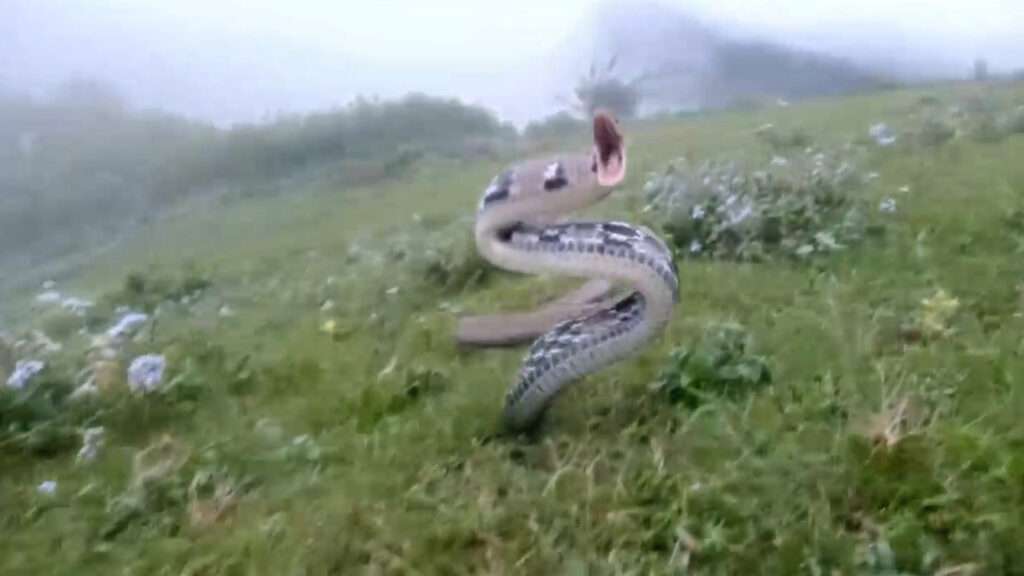
He said: “People are so scared when they are bitten that they literally die of fright and panic.”
The reality, he said, was that less than 10 per cent of the country’s snakes are venomous and of those, only a four really needed to be watched out for, which are the Indian cobra, Russell’s viper, the saw-scaled viper and the common krait, which are deadly.
Arshad is less nervous about snakes because he grew up in a family that kept goats, chickens, ducks rabbits and dogs, as well as more unusual pets.
He said: “I got to know a lot about wild animals, like birds and reptiles, and found them fascinating. India has over 340 of the world’s snake species represented and whenever they turn up in homes, people just typically kill them straight away. There are reportedly 50,000 snakebite cases a year but there are 500,000 snakes killed.
“I wanted the film to show that although aggressive, this snake is also harmless and very beautiful.”
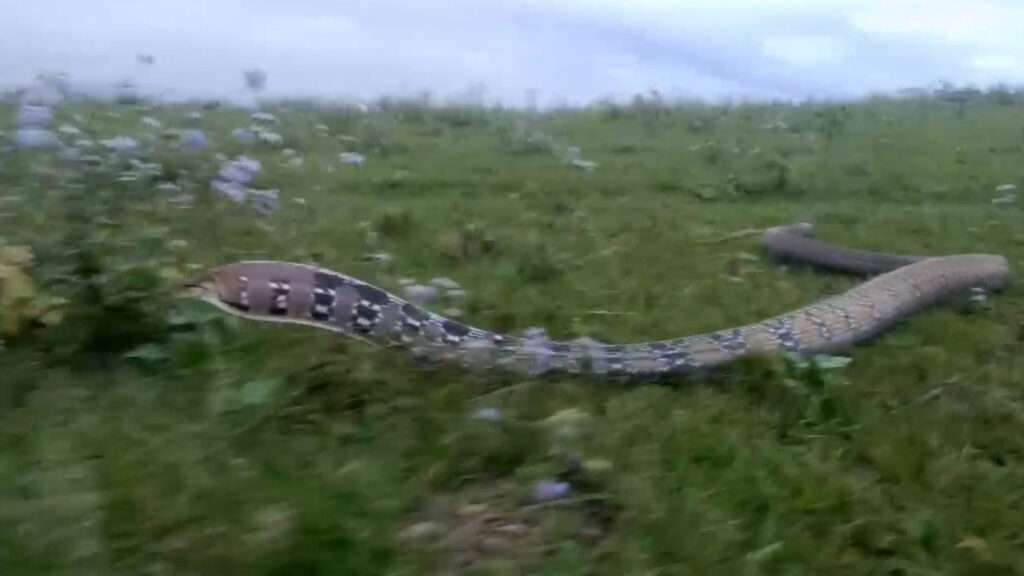
He added that the video was part of his personal campaign to show people more about snakes and that even the nonvenomous ones will seem dangerous and it’s important to try and recognise them and know the difference. He said: “I work all the time to try and break some of the myths.”
The snake he filmed he said was a Coelognathus radiata, otherwise known as a radiated rat snake.
He added: “As it’s a rat snake, they have strong jaws to grip, coil and swallow rodents, and they can reach a length of seven feet. They are fast-crawling snakes to catch their prey.”
To find out more about the author, editor or agency that supplied this story – please click below.
Story By: Michael Leidig, Sub-Editor: Joseph Golder, Agency: Newsflash
The Ananova page is created by and dedicated to professional, independent freelance journalists. It is a place for us to showcase our work. When our news is sold to our media partners, we will include the link here.

